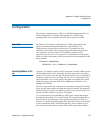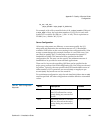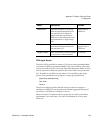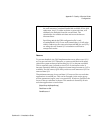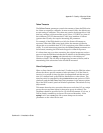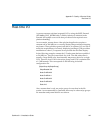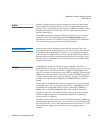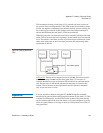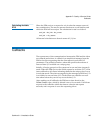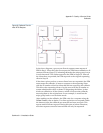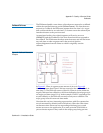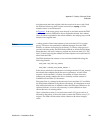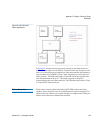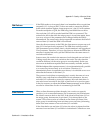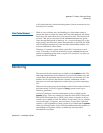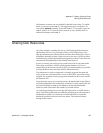
Appendix D Quality of Service Guide
Monitoring
StorNext 3.1.3 Installation Guide 151
to all clients that have tokens informing them of the new amount of non-
real-time I/O available.
Client Token Releases 4
While it is not a failure case, the handling of a client token release is
exactly the same as in the case where the client disconnected. All clients
retain non-real-time tokens for a fixed amount of time. The default is 60
seconds. This can be controlled via the
nrtiotokentimeout mount option.
After the specified period of inactivity (i.e., no non-real-time I/O on the
stripe group), the client will release the token back to the FSM. The FSM
will re-calculate the amount of non-real-time bandwidth available, and
send out callbacks to other clients.
Therefore, if a situation exists where a periodic I/O operation occurs
every 70 seconds, it would be beneficial to set the
nrtiotokentime mount
option to something greater than or equal to 70 seconds to cut down on
system and SAN overhead.
Monitoring
The current real-time statistics are available via the cvadmin utility. The
show long command has been enhanced to provide information as to the
current limit, the minimum amount reserved for non-real-time I/O, the
number of active clients, the amount currently committed, and the
amount a non-real-time application could hope to get when requesting
I/O.
Whenever the stripe group status changes (such as from non-real-time to
real-time mode), an event is logged to
syslog (system event log on
Windows platforms).
On the NT platform, real-time performance is also available via the
perfmon utility. There are counters for both the client (SNFS Client) and
FSM (SNFS File System Server [FSS]). In the client, a number of
rtio_xxx
counters are available to track the number of real-time I/Os/sec, number
of non-real-time I/O requests, non-real-time I/O starvation, and other
counters. A full explanation of each counter is provided with the
perfmon
utility by clicking Explain. In the FSM, information about the number of
outstanding non-real-time clients, available
rtio, and other QOS
information is available.



